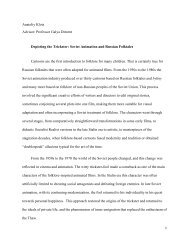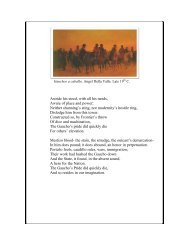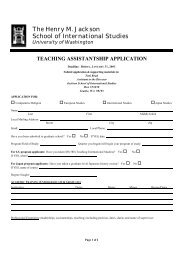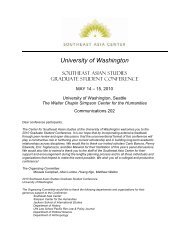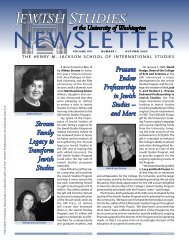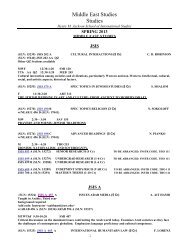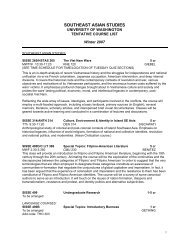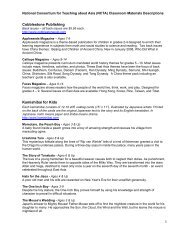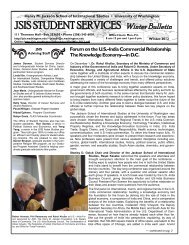to view full paper
to view full paper
to view full paper
Create successful ePaper yourself
Turn your PDF publications into a flip-book with our unique Google optimized e-Paper software.
saber fencing and wrestling. She is equal <strong>to</strong> the groom in all those skills, except finally he<br />
manages <strong>to</strong> wrestle her down. 8<br />
Among the numerous Uzbek wonder tales of this type, only in “Рождённый дивом<br />
[Born by a dev],” 9 however, there is an actual physical fight with the magically strong bride, who<br />
is finally defeated after six days of wrestling by her being throttled with her long hair. In the<br />
other tales of this type, “Клыч-батыр [Klych-batyr]” 10 and “Мислабу [Mislabu],” 11 the bride is<br />
conquered by tricking her protective horse and by tying her forty plaits <strong>to</strong> forty posts while she is<br />
asleep (K635.1. Hair of sleeping maiden tied <strong>to</strong> tree so that she is not able <strong>to</strong> rise). Her<br />
subjugation effected by the sign of her gender—her long plaits—underscores the gender focus of<br />
the tale. The nature of the murderous bride ranges from being a slightly magical princess as in<br />
“Клыч-батыр [Klych-batyr]” <strong>to</strong> a <strong>full</strong>-blown peri as in “Мислабу [Mislabu].” Whatever the<br />
range of her magic, what makes her vulnerable and what allows her defeat is her gender.<br />
An unsuccessful quest for the supernatural bride is another regional feature of this tale<br />
type, not usually found in European examples. Such a false-start marriage <strong>to</strong> an armored bride is<br />
described, for example, in a heroic tale translated in<strong>to</strong> Russian from an endangered Turkic<br />
language, Kumandin, the current one thousand speakers of which reside in the Altay region of<br />
Central Asia. “Димей и Шимей [Dimei and Shimei]” features a woman-batyr by the name of<br />
Ochy-Karaach as a reluctant bride whom the hero Dimei woos after he loses his wife. This<br />
heroic tale, akin <strong>to</strong> Russian bylina, is unusual in that besides the description of the woman-<br />
8<br />
Translated in<strong>to</strong> Russian by E. Ibragimov in Азербайджанские сказки [Azerbaijani folktales] (Baku: Maarif,<br />
1983), 66-72.<br />
9<br />
In Узбекские народные сказки [Uzbek folktales] in Russian (Tashkent: Gafur Gulyam Art and Literature<br />
Publishing House, 1972), 502-508.<br />
10 In Ibid., 237-242.<br />
11 In Ibid., 546-558.<br />
6



